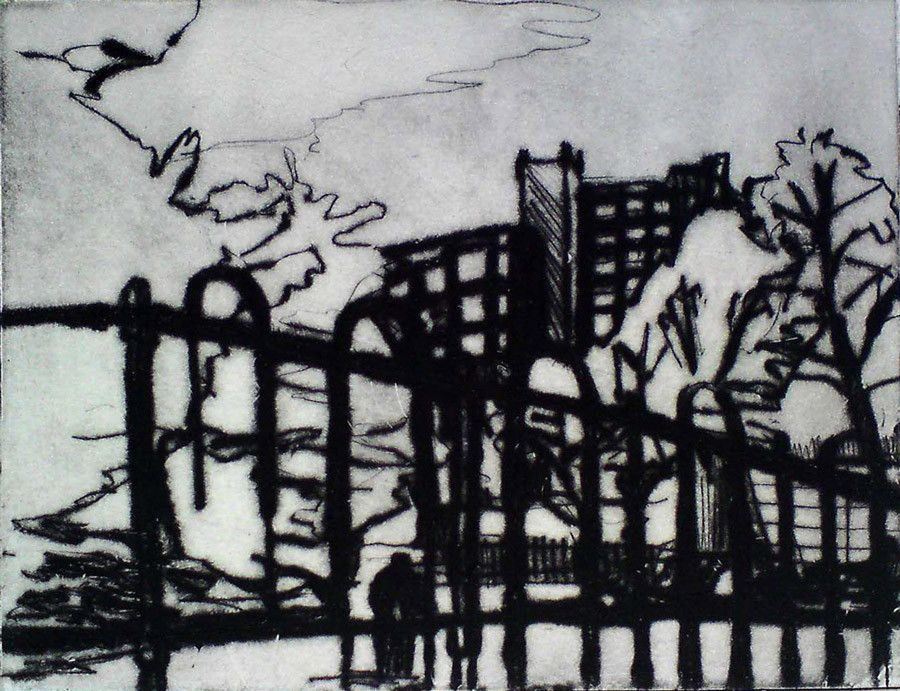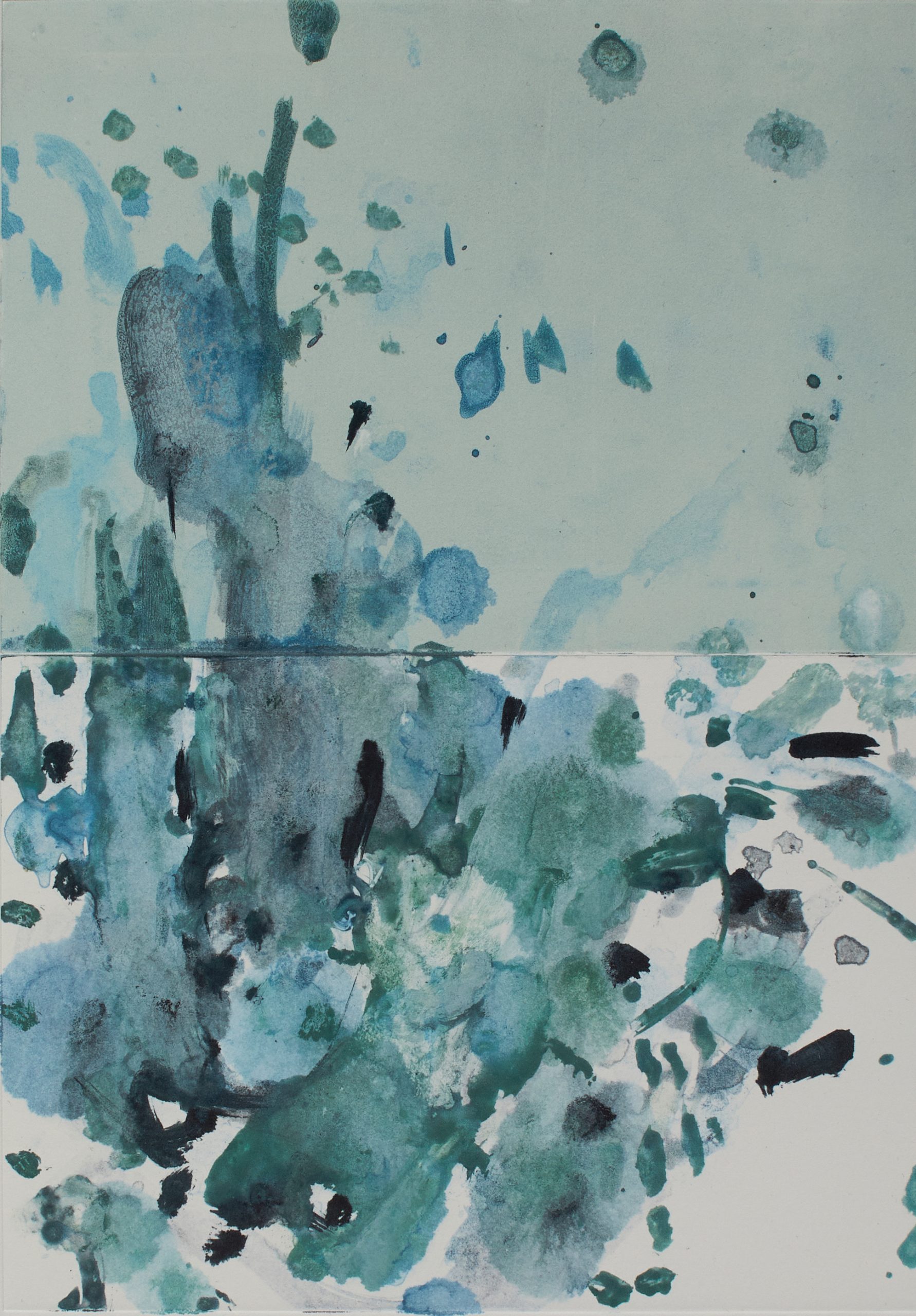Aquatint
Fine resin dust is applied to the surface of the etching plate, then melted from underneath to melt and harden the dots of resin. When immersed in acid the plate ‘bites’ between the aquatint resin dots, creating a distribution of tiny holes on the plate which print as a tone.
Carborundum
Abrasive carborundum grit (silicon carbide) is mixed with acrylic medium or glue and painted onto a flat surface, such as plastic or metal.
Drypoint
Using a sharp pointed tool like an etching needle, an image is scratched into a flat polished sheet of metal such as copper or aluminium. Plastic or card can also be used.
Etching
Etching was originally invented as a method for adding decoration to armour during the Middle Ages. Artists began to use metal plates for printing in the 15th century, when Albrecht Durer made work on iron plates. Later artists such as Andrea Mantegna in Italy and Rembrandt in Holland went on to make etchings on copper.
Hard ground
A traditional technique in etching. After degreasing the surface of the plate, hard ground is rolled over the surface.
Linocut
In this relief printing process, an image is carved or etched into a sheet of linoleum. Ink is applied to the lino using a roller; the cut-away areas do not pick up ink. Paper is placed down onto the image and either printed on a press or printed by hand.
Lithography
An image is painted, drawn or stencilled onto a slab of limestone or a metal plate (often aluminium) with oily materials, including greasy crayons and pencils, special ink called tusche, and photochemical transfers.
Monotype
Monotype is a way of making a unique print that cannot be repeated. Using methods from painting and drawing, ink is applied to a surface, and marks can be added or taken away from the surface.
Soft ground
Soft ground was invented in the latter half of the eighteenth century as a means of reproducing the grainy qualities of chalk work. It was first used in England by Gainsborough and artists of the Norwich School.
Woodcut
Knives, gouges and other tools are used to carve an image into a block of wood. Ink is applied using a roller; the cut away areas do not pick up ink as they are below the surface. Paper is placed on top and is printed with a press or by hand.









